We have done a lot of things on our screens this year, and it was tempting to just dismiss Beckman’s Virtual Open House as just another thing to do, at home, on our computers. However, if anyone can pull off an interesting virtual event, it’s Beckman Institute. They set up a user friendly, interactive, and interesting interface that was fun to spend time exploring.
Virtual Escape Room
CU Adventures in Time and Space knows how to create a unique and challenging escape room experience. I first tried one of their games in 2018, and have been hooked ever since. I said it then and I’ll say it now: We don’t get many opportunities to challenge our brains in a fun sort of way as adults, CU Adventures continues to innovate in this challenging time, and this partnership with Beckman was genius. In one experience, my husband and I were able to learn a little Beckman history, take a peek in a couple of the real life labs, and solve challenging puzzles along the way.
The scene: “You’re visiting the Beckman Institute on the University of Illinois Urbana-Champaign campus for its annual open house, but something seems odd. All the exhibits are locked, and you can’t find anyone!”
The escape room experience that followed involved a kind of virtual tour through Beckman Institute, with digitally added clues and interactive actions embedded throughout. We began in the Rotunda, where you could click these buttons and make lasers come out of Arnold O. Beckman’s eyes.
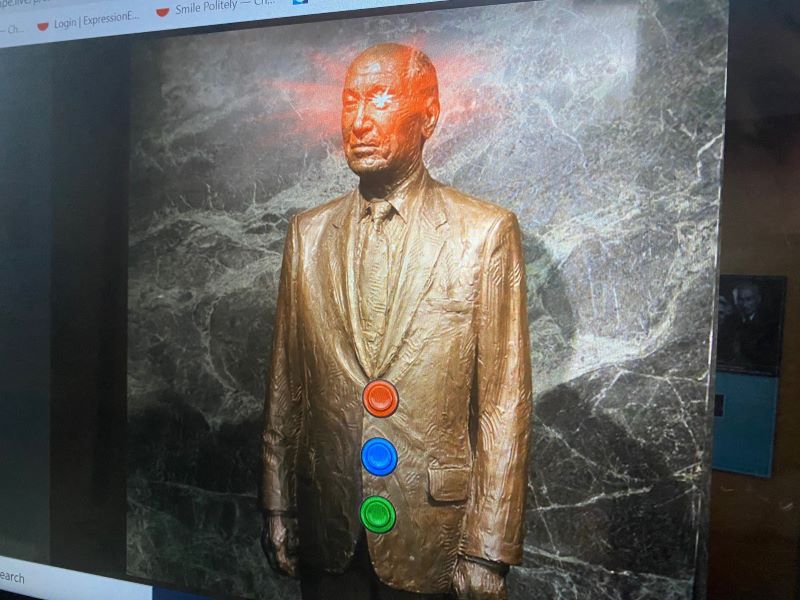
Screenshot by Julie McClure.
The game also brought us to the MRI exhibit, touching on an important piece of University of Illinois history. Paul Lauterbur was a chemist and U of I professor who won the Nobel Prize in Phisology or Medicine for his work in developing MRI technology. In 2002, Beckman Institute established the Bioimedical Imaging Center to support MRI research and innovation.
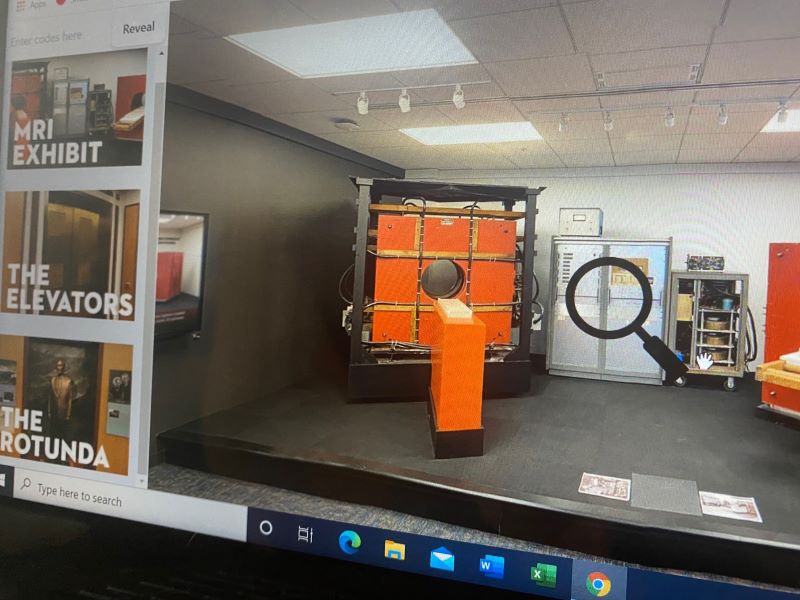
Screenshot by Julie McClure.
They utilized some nostalgia in the game, pulling in photos from the early days of Beckman. The gorilla makes more sense when you’re playing. Beckman Institute officially opened in 1989.
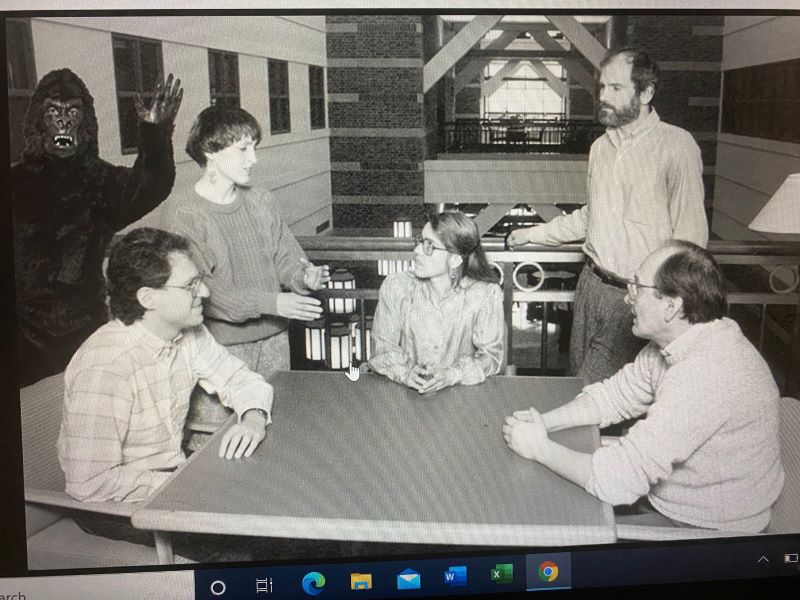
Screenshot by Julie McClure.
In typical CU Adventures game fashion, there were a lot of key codes to find and decipher, and because this is part of a learning experience, there were many facts and tidbits along the way that explained more about the work being done at Beckman. Did I know a darn thing about calibration switches on an MRI scanner before this? Nope. Could I explain them to you now? Also no, but that’s just because retaining information is difficult right now, ok? I knew about it for approximately six minutes.
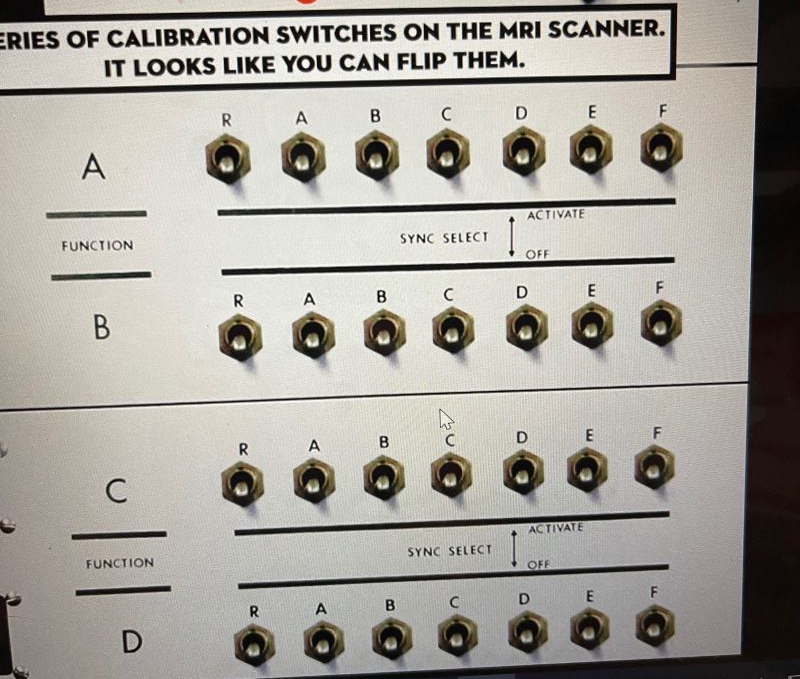
Screenshot by Julie McClure.
I am proud to say we made our way through the game without a single hint. And boy is it tempting when all you have to do is click a button, rather than admit to a real person that you need help. But, we perservered and won the game in about 30 minutes. (JM)
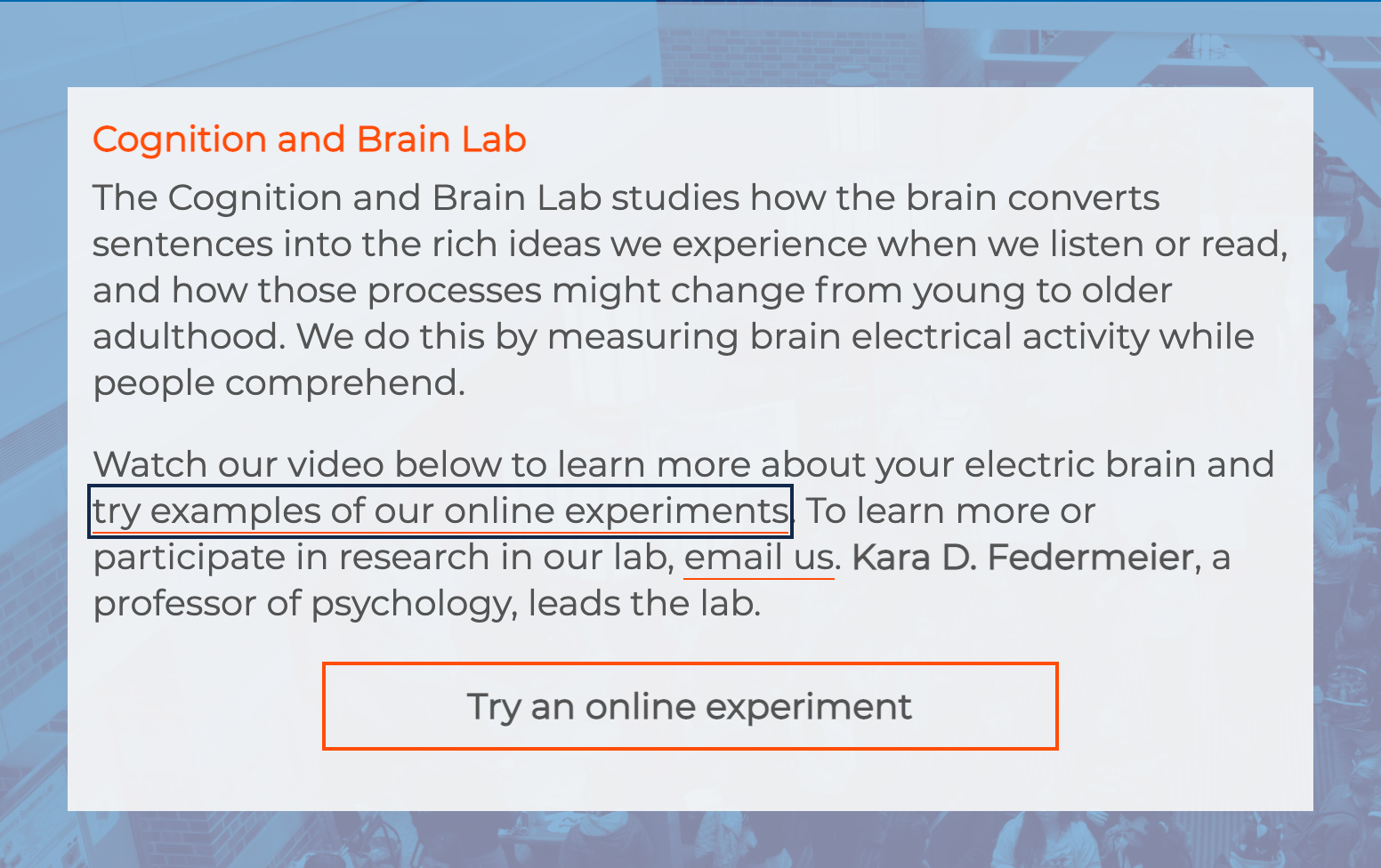
Screenshot by Seth Fein.
Cognition and Brain Lab
I happen to love any sort of “experiment” that asks me to flex my brain muscles a bit, simply because it is a stark reminder each and every time that I need to do more to work them out. This simple exercise emphasized recognition of patterns in letters and words primarily, and was relatively simple, but even inside of that construct, I found myself challenged by a few things that I’d probably shrug off if I was being told about it. It was fun!
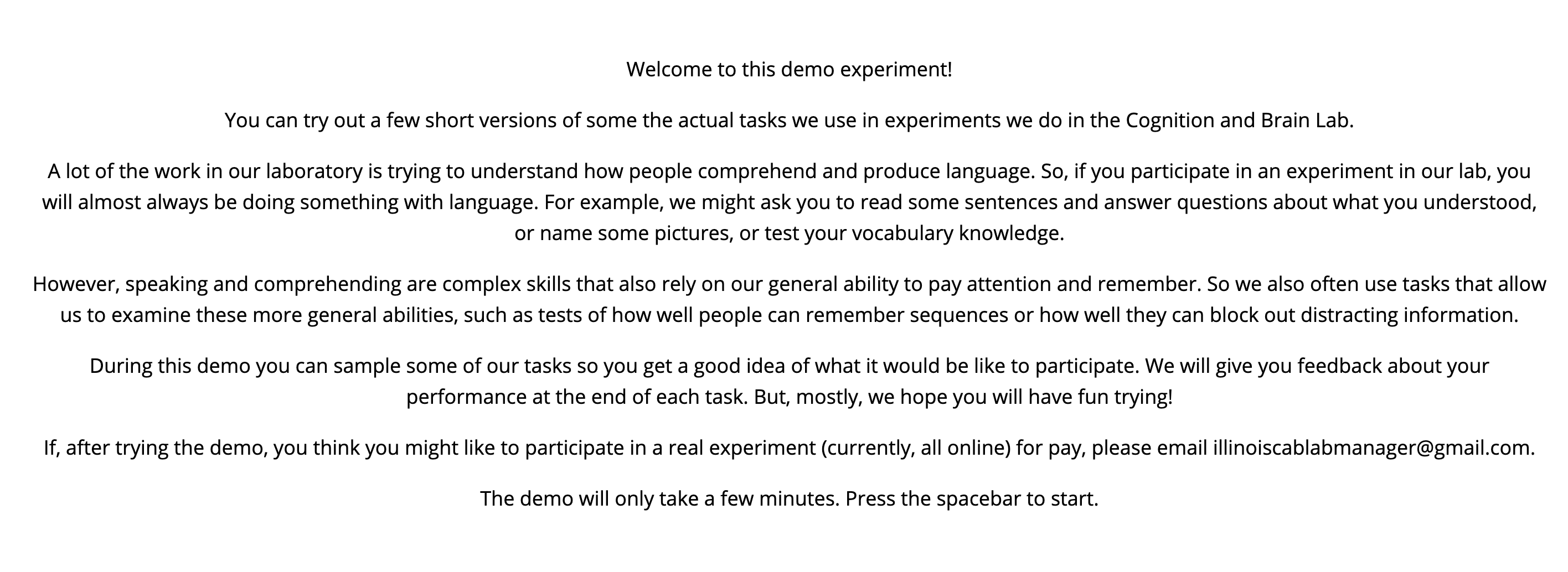
Screenshot by Seth Fein.
Bugscope
Ever since its debut in 1998, Bugscope at Beckman Institute has been run by the Imaging Technology Group, and their work is just phenomenal. Having taken a class by the preeminent entomologist Dr. May Berenbaum during college, I had a chance to learn some of the basics and still feel grateful for that opportunity. But I, like most people, have always been super interested in how bugs and insects function; is there a kid in the world who hasn’t looked at a praying mantis or a firefly up close and had their mind blown by the idea that they, too, are looking back at them?
Alas, my brain isn’t wired for scientific theory, and never has been. I am not capable of any real natural ability for this kind of work or observation outside of what just “looks cool.”
You want to know what looks cool? Bugs under a powerful microscope. This session of Bugscope was so fun. Scott Robinson led the Zoom session and did a very nice job teaching us about what we were seeing and why it was important or relevant, making sure with his colleagues to point out each time they changed images or further enhanced what we were seeing.
My seven year old was amazed, and just kept asking if those bugs were living in his hair. That might be because I tell him he has bugs living in his hair all the time. Look, I am just trying to get him to let me to wash his damn head, but looking at images like this, he might just start offering his scalp up to me without argument.

Screenshot by Seth Fein.

Screenshot by Seth Fein.
I am always so happy to be reminded about how much amazing work goes on inside of the walls and virtual walls of UIUC. Beckman Institute is one of the crown jewels of the community and despite the fact that lots of the work and research will fly right over the head of the average citizen, they always do an incredible job of finding accessible and interactive ways to reach those of us who aren’t well suited for science.
This was a virtual event that was enjoyable and engaging for the hour long session, and appealed to my kids, and that made my Saturday morning that much more interesting and rewarding. (SF)








